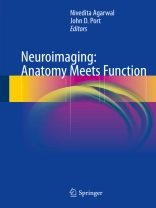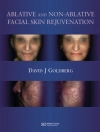This book combines classic MR anatomy with current understanding of human brain function. Recent advances in neuroscience have highlighted the importance of correlating brain anatomy with underlying brain function, since the brain contains a highly sophisticated organization of anatomical and functional relationships that are not readily “visible” with standard imaging. The use of magnetic resonance imaging is rapidly increasing in the field of neuroscience, and remains at the forefront for offering insights into the normal and pathologic structure and function of the human brain.
The relatively recent concepts of structural and functional connectivity make it even more important to visualize the brain as a whole rather than looking at its individual parts. This holistic approach is vital in understanding concepts such as neuroplasticity that are currently incorporated into physical and cognitive rehabilitation programs for patients with stroke or neurodegenerative diseases. Ultimately this combined approach may reduce both overdiagnosis and misdiagnosis when integrated into routine clinical routine. This book will be of interest to neuroradiologists, general radiologists and neurologists alike, as well as medical students, residents and fellows.สารบัญ
Part I Brain.- 1. Structural anatomy of the brain.- 2. White matter anatomy of the brain.- 3. Vascular anatomy.- 4. Brain anatomy at 7T (images axial/coronal).- Part II Brain stem.- 5. Structural anatomy of the brain stem.- 6. White matter anatomy of the brain stem.- 7. Vascular anatomy (3T).- 8. Brain anatomy at 7T (images axial/coronal).- 9. Functional anatomy of major lobes.- Part III Cerebellum.- 10. Structural anatomy of the cerebellum.- 11. White matter anatomy of the cerebellum.- 12. Functional anatomy of the cerebellum.- Part IV Cranial nerves.- Olfactory nerve.- Optic nerve.- Oculomotor nerve.- Trochlear nerve.- Trigeminal nerve. – Abducens nerve.- Facial nerve.- Vestibulo-coclear nerve.- Vagus nerve.- Spinal accessory nerve.- Hypoglossus nerve. Part V Surgical and endoscopic illustrative anatomy.- Cavernous sinus.- Cerebellar pontine angle.- Superior orbital fissure.- Trans-sphenoidal.- Sub-occipital approach.- Circle of Willis: Anatomy and surgical ap
proach. – Orbital Surgery. – Pineal Gland Surgery. – Craniotomies. – Sellar and parasellar surgery. – Neurovascular conflict (Trigeminal nerve). – Part VI Sample cases (Imaging and interpretative pearls).เกี่ยวกับผู้แต่ง
Nivedita Agarwal is a board-certified neurologist and neuroradiologist currently working at the Hospital of Rovereto, Azienda Provinciale per i Servizi Sanitari in Trento, Italy. She is appointed adjunct assistant professor at the Department of Radiology, subsection of Neuroradiology of the University of Utah in 2010 and annually fulfills her responsibilities by teaching to residents and fellows in radiology and neuroradiology. She serves as the medical director for Functional Neuroimaging Laboratory at the University of Trento. Over the past six years she has diversified her teaching experiences in the areas of Radiology, Cognitive Neuroscience and Mathematics at the universities of Verona, Trento, Utah and at Johns Hopkins. Her signature lectures include combining neuroanatomy with function, and she has organized several seminars in this field over the past 5 years. Her research includes the development of diffusion tensor and resting state functional imaging techniques and their applications to individual patients (so-called Precision Medicine). She is the author of several scientific articles in peer-reviewed journals and has been an invited speaker at national and international scientific meetings.
John D. Port, M.D., Ph.D. received his BS in computer engineering from the Massachusetts Institute of Technology in 1986. He received his Ph.D. in Neuroanatomy from the University of Illinois in Chicago in 1992, and his M.D. from the University of Illinois College of Medicine in 1994. He completed his medical residency and fellowship in Radiology and Neuroradiology, respectively, at the Johns Hopkins Hospital in 2000. He is currently an Associate Professor of Radiology as well as an Assistant Professor of Psychiatry at Mayo Clinic in Rochester Minnesota. He is a board certified radiologist and neuroradiologist, and spends the majority of his time in clinical practice. His research primarily involves developing magnetic resonance (MR) spectroscopy and MR imaging tools for various clinical applications including psychiatric, metabolic, and endocrinology diseases. To date he has written over 50 peer-reviewed publications, 5 book chapters, and over 100 abstracts that were presented at national and international meetings. He is well known internationally for his research and educational presentations on psychiatric illness, specifically schizophrenia and mood disorders.












